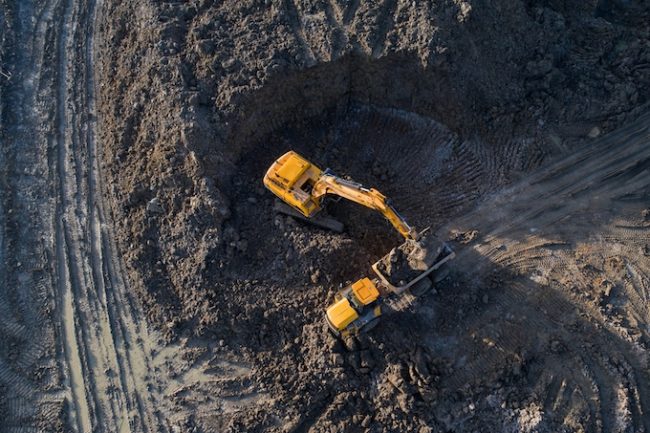
Understanding the impact of engine idling
By Brian Humphrey, OEM Technical Liaison, Petro-Canada Lubricants
Equipment Skills Development Software
The role of engine idling is often overlooked on job sites, even though reducing equipment idle time can lead to considerable gains for the businesses. PHOTO: Getty Images
Downtime for a construction operation can cause significant disruption and have a real impact on a company’s bottom line. It’s therefore essential to ensure that equipment is running smoothly — even in the most difficult and extreme conditions.
There are a multitude of factors that impact fuel efficiency and equipment performance. While all aspects should be evaluated and optimized, the role of engine idling is often overlooked, even though it can lead to considerable gains for the business when reduced.
The cost of idling
Manufacturer Komatsu estimates that an average machine’s idle time is 40 per cent — a considerable amount of time. In fact, given the long periods of time that construction machinery remains stationary, fleets may well idle more than this.
It is estimated that an hour of idle time has the same impact on an engine as driving approximately 40 kilometres (25 miles) because the combustion process is affected. Idling increases the likelihood of the oil temperature dropping below 100 C, which can cause water to build up and result in fuel dilution and increased acids, all of which accelerate engine wear.
Fuel efficiency is a crucial issue and an on-going challenge for construction fleets because fuel costs are one of the largest expenses for heavy equipment managers. Compared to other methods of improvement, the impact of idling is rarely considered, even though it is estimated that a large diesel engine consumes up to 3.8 litres (one gallon) of fuel each hour it is left idling.
Alongside other improvement programs, lubricants help improve a fleet’s fuel economy while protecting equipment from the impact of idling.
Selecting the right lubricant
Using lubricants helps to reduce pumping and spinning losses and minimize metal-to-metal contact between moving components in the engine. This enhances performance and protects vital engine hardware.
When managers select a heavy-duty lubricant, API CK-4 oils are now of particular relevance for the construction industry as they offer improved resistance to oxidation and aeration alongside increased shear stability. Off-highway engines have the potential for more air than usual to become entrained within the oil, meaning that aeration control is especially important for construction equipment. Entrained air can be particularly dangerous at the bearings as a robust oil film is needed to protect them.
API CK-4 SAE 10W-30 oils also have a lower viscosity at low temperatures allowing them to move more easily throughout the engine and flow faster. Using the new category of oils therefore helps to prevent engine wear during start-up, which reduces unplanned maintenance – an essential benefit because idling reduces the work rate of the engine. Modern low viscosity oils also enable easier cold starts, which supports the ability for the engine to be turned off in order to reduce idling. Additionally, the oil selected should be able to maintain its Base Number in order to neutralize any acid build up during prolonged periods of idling.
Oils that combine these properties enhance protection of heavy-duty equipment engines and can improve reliability, reducing unplanned vehicle downtime. When selecting a product, it is important that lubricant choice should always be based on the recommendations outlined in the Original Equipment Manufacturer (OEM) owner’s manual.
Utilizing analysis
Managers can highlight if their oil needs to be changed earlier than usual by undertaking a used oil analysis program, bringing to attention maintenance issues that can be accelerated by engine idling before they become serious and expensive to repair.
Implementing these programs can also help to extend oil drain intervals. However, oil analysis testing should always be supported by recommendations from the relevant OEM manual, alongside advice from technical experts — in particular when considering whether and how to extend drain intervals. By going against the recommendations in the OEM manual, managers can void warranty coverage if damage or engine failure occurs, making any maintenance even more expensive.
The oil analysis process typically involves three steps: taking a representative sample from the equipment, sending the sample to a qualified used oil analysis lab, and interpreting/acting upon the recommendations of the results. The process is most effective when performed at regular intervals, enabling a performance database to be created and allowing managers to measure trends over time. This allows for maintenance plans to be adjusted and managed to incorporate any planned downtime.
When off-highway engines idle, their fuel efficiency and performance can be significantly affected. Tough heavy-duty lubricants can perform under these conditions and by effectively monitoring the effect on the engine, construction equipment can be better protected, resulting in fuel savings and reducing unplanned downtime, ultimately improving the company’s bottom line.
Brian Humphrey joined Petro-Canada Lubricants in 2013 as OEM Technical Liaison, HD Commercial Equipment Powertrain sectors, with responsibility for building the Petro-Canada Lubricants relationship with the North American Heavy-Duty Original Equipment Manufacturers. His role is to gain a clear understanding of the changing needs of Heavy-Duty equipment lubrication and specifications and communicate those within the company to provide high value products and services to our mutual equipment end users.
With more than 35 years of experience working for and with prominent companies across energy, transport, chemical and industry sectors, Brian has held senior R&D, Engineering, and Sales Services roles and worked in international markets.





